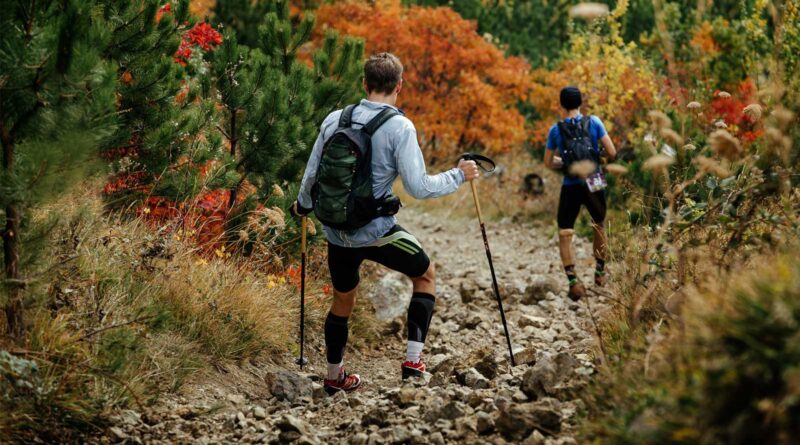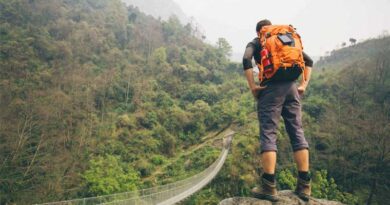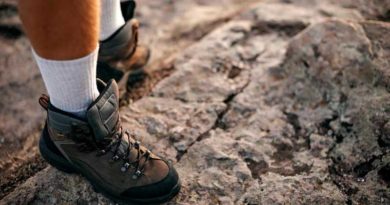Can you Wear Compression Socks for Hiking
Wearing the right gear while hiking is essential. There are many factors to consider when choosing how to dress for your hike. When deciding what to wear for your hike, you should be thinking about your safety, your comfort, and how well your clothes can adapt to the conditions of your hike. While some only determine that more significant pieces like your hiking boots or jacket to be essential, it is necessary to put thought into each and every piece and layer of your hiking gear.
One area that usually gets ignored but can have one of the highest impacts on the success of your hike is your feet. However, ensuring that your feet are in good shape for your hike does not start with your shoes. It begins with your socks. Should you choose a pair of compression socks for your next hike? Keep reading to learn more!
What are Compression Socks?
Compression socks are unlike your average wool or poly-blend socks. Most would describe them as stretchy and tight, which may not sound like a desirable sock to be wearing while you climb through the woods or a forest for hours. However, they are unique in the sense that they help promote better blood flow.
Compression socks kind of look like shapewear for your feet They are incredibly beneficial for hikers. You may find see them with a few other names or variations, such as compression sleeves, graduated compression socks, or pressure socks. The primary benefits that they provide are increased blood flow and reduced swelling.
These benefits are accomplished through the tightness of compression created by wearing the socks. Available in many different levels, sizes, and other variations, they are known to help reduce muscle soreness and leg fatigue.
Should you wear them for Hiking?
Compression socks come in a few different varieties. Because of this, the price can fluctuate greatly. While any good pair of compression socks will improve your hike, some are created specifically with hikers in mind. They offer more comfort and durability features, such as cushioned soles, arch support, and they are constructed with moisture-wicking fabrics.
Compression socks are an excellent option for hikers. If you find that your feet are swollen or sore after a hike or that you get many blisters while walking, compression socks may be the answer to your problems. They can be purchased almost anywhere hiking gear is sold, including online. All you need is to choose a pair that matches your shoe size. Compression socks offer many benefits to hikers, but these are the three most significant:
1. Reduces Blisters
Because compression socks fit snugly, which eliminates the sock-to-skin friction that causes your skin to blister. These socks are also moisture-wicking, meaning that they move sweat away from the skin to prevent fabric bunching and blister formation.
2. Increases Blood Flow
When you are on your feet for extended periods, it can be challenging for your blood to pump back towards your heart. Compression socks help your blood flow back from your extremities towards the heart. This increases the flow of fresh and oxygenated blood to areas that are prone to injuries, such as the Achilles tendon and fascia.
3. Reduces Swelling
Plantar Fasciitis and tendonitis can cause substantial swelling in the lower calf, ankle, and foot. The use of compression socks helps to prevent fluid from accumulating in these areas, which will help relieve the pain that is associated with swelling.
What to Consider when choosing Hiking Clothes?
Before discussing whether or not compression socks are the right choice for hiking, it is very important to understand what things you should keep in mind as you determine what to wear during your hike.
1. Safety
Of course, you want to ensure that what you are wearing is going to keep you safe from any potential threats while you are on your hike. For example, if you are hiking in an area that is particularly cold or snowy, you will want to wear warm clothing and plenty of layers to protect yourself from frostbite. Other potential threats are pests and bug bites. If you are hiking in an area more prone to Lyme disease, you will want to be sure that you wear long protective layers.
3. Comfort
While hiking maybe a lively activity, there is no reason to skimp on comfort when you are choosing what to wear. Cotton fabrics can be a bad choice as they tend to retain moisture, which is not the best choice for a hike that is going to make you sweat. The same approach goes for what you put on your feet! Wearing the wrong pair of shoes or socks can significantly determine whether or not you enjoy your hike.
4. Versatility
Mountain terrains are known for their very fluid weather and climate. Not only can the temperature change significantly during your hike, but precipitation in the form of rain or snow is also always a possibility. Because of this, it is incredibly important to dress in layers, some of which should be waterproof.
It’s all about your Footwear!
Hiking requires you to be on your feet for hours. This means that you better be wearing the right footwear for your hike. Wearing ill-fitting or unsupportive socks and shoes can turn a great hike into a nightmare full of blisters, sore feet, and achy legs. That is why hiking socks are an essential piece of gear that you may want to wear for your hike. If you aren’t familiar with them, keep reading to learn more.
Final Thoughts
Overall, compression socks are a fantastic addition to your hiking ensemble. They provide many great benefits and protect your legs and feet while you are hiking. Because there are many different pairs and variations, be sure to choose a pair that is best suited for you and fits well. You will notice a positive impact on your hikes and how you are feeling post-hike in no time.




